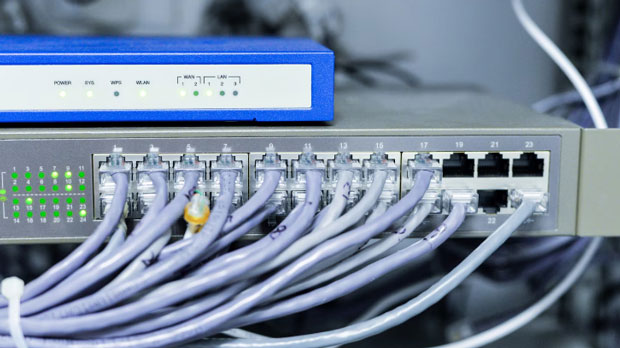In today's digital age, data privacy and security have become paramount concerns for individuals and businesses alike. With the increasing sophistication of cyber threats, ensuring the protection of sensitive information is crucial. One of the key tools used in this endeavor is the socks5 proxy configuration. A Socks5 proxy serves as an intermediary between a user’s device and the internet, providing a layer of protection against unauthorized access and data leakage. In this article, we will explore how a properly configured Socks5 proxy can help prevent data leaks, offering a deeper understanding of its benefits, functionality, and role in enhancing online privacy. Understanding Socks5 Proxy: An OverviewBefore delving into the specifics of how a Socks5 proxy prevents data leaks, it’s important to first understand what it is. A Socks5 proxy is a type of internet protocol that routes internet traffic through a remote server. Unlike traditional proxies, which only route HTTP and HTTPS traffic, Socks5 supports a wider range of internet protocols, including TCP, UDP, and ICMP. This flexibility makes it a valuable tool for users looking to secure their internet activities.A Socks5 proxy doesn’t alter the content of the data being transmitted; instead, it acts as an intermediary, making requests on behalf of the user. This adds a layer of anonymity, as the destination server only sees the proxy server’s IP address, not the user’s. This means that the user's real IP address is hidden, providing an essential first line of defense against potential data breaches.The Role of Socks5 Proxy in Preventing Data LeaksData leaks often occur when sensitive information is exposed due to weak security measures, whether it’s personal data, login credentials, or browsing history. The Socks5 proxy configuration helps mitigate these risks in several ways.1. Masking the User's IP AddressOne of the primary features of a Socks5 proxy is its ability to mask the user's real IP address. This is significant in preventing data leakage because many data breaches occur through the exploitation of users’ IP addresses. Cybercriminals can track IP addresses to determine physical locations, identify user behavior, and launch targeted attacks. By using a Socks5 proxy, users can route their internet traffic through a server in a different location, effectively hiding their actual IP address.This layer of anonymity not only protects users from location-based attacks but also ensures that their internet activity is more difficult to trace. For businesses, this means that employees accessing sensitive data or systems can do so without exposing their true identity, preventing the leak of information tied to their specific IP addresses.2. Securing Data Transmission socks5 proxies work by transmitting data through secure, encrypted tunnels, which prevents hackers and unauthorized third parties from intercepting data. When configured correctly, Socks5 proxies ensure that sensitive data is transmitted securely, even when users are browsing public or unsecured networks.In an era where public Wi-Fi networks are often vulnerable to cyberattacks, a Socks5 proxy adds a layer of security. Without it, users may be exposed to Man-in-the-Middle (MitM) attacks, where hackers intercept communication to steal personal information. With the Socks5 configuration, any data sent through the proxy is encrypted, making it difficult for malicious actors to access the data being transmitted.3. Preventing DNS LeaksOne common vulnerability in many internet security configurations is the DNS leak. DNS stands for Domain Name System, which translates domain names (like www.example.com) into IP addresses. When a user connects to a website, their DNS request may be sent through their internet service provider (ISP), potentially exposing their browsing history.A properly configured Socks5 proxy helps prevent DNS leaks by routing all internet traffic, including DNS queries, through the proxy server. This ensures that even if the user’s internet service provider (ISP) is monitoring DNS requests, they will not have access to the user's browsing history, adding an additional layer of protection against potential data leaks.4. Enhanced Privacy for Secure TransactionsIn business environments, secure transactions are essential to protect financial data, intellectual property, and client information. Whether sending or receiving confidential data, companies must ensure that sensitive information is not exposed during transmission. A Socks5 proxy configuration allows users to perform online activities without worrying about data leakage.For example, when sending or receiving financial data, such as credit card information or banking credentials, a Socks5 proxy can ensure that all communications are secured by routing traffic through encrypted channels. This reduces the risk of data interception or leakage during transactions, enhancing the privacy and security of online communications.5. Reducing the Risk of Tracking and ProfilingModern advertising techniques often rely on tracking user activity through various means, including the IP address. By using a Socks5 proxy, users can prevent third-party advertisers from collecting information about their browsing habits. The proxy server’s IP address replaces the user’s real IP address, preventing websites from tracking personal details such as location, interests, and online behaviors.This aspect is particularly useful for individuals who prioritize privacy and want to avoid profiling by marketers, as well as businesses that need to prevent competitors from tracking their online activities. By leveraging a Socks5 proxy, users can maintain a higher level of anonymity and reduce the chances of being targeted by unwanted advertising or malicious third parties.Best Practices for Configuring Socks5 ProxiesTo fully leverage the benefits of a Socks5 proxy in preventing data leaks, it is important to configure it properly. Some best practices include:1. Use Strong Authentication: Ensure that the Socks5 proxy is configured to require strong authentication methods, such as passwords or certificates, to prevent unauthorized access. 2. Ensure Encryption is Enabled: Make sure that the Socks5 proxy is set to encrypt data traffic, securing it from potential interception during transmission.3. Regularly Update Proxy Settings: Regularly check and update the Socks5 proxy configurations to ensure they align with the latest security protocols.4. Choose a Reliable Proxy Server: Select a reliable and secure socks5 proxy server that offers high levels of encryption and has a proven track record of preventing data breaches.ConclusionIn conclusion, a Socks5 proxy configuration plays a critical role in protecting against data leaks by masking the user's IP address, securing data transmission, preventing DNS leaks, enhancing privacy during transactions, and reducing the risk of tracking. By properly configuring and utilizing Socks5 proxies, individuals and businesses can safeguard their sensitive information and maintain privacy in an increasingly connected world. While no security measure is entirely foolproof, implementing a Socks5 proxy can significantly enhance the overall security posture and help prevent data leaks from compromising personal or business-related information.
Jan 15, 2025





























































